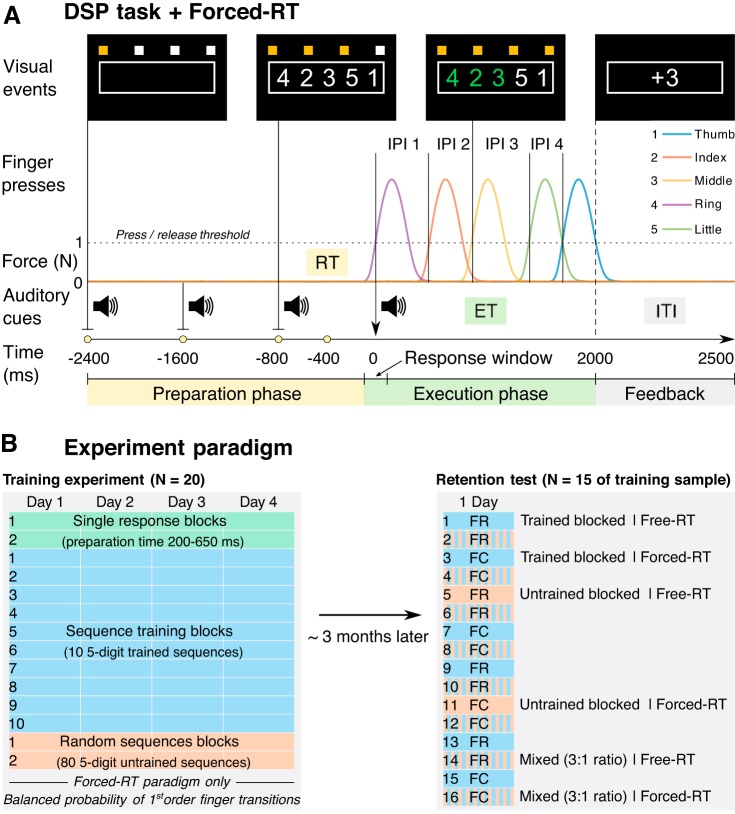Fig. 2.
Experimental task and paradigm. A: a series of 4 audio-visual signals (800 ms apart) specifies the timing of movement initiation (vertical arrow) within the acceptable response window. Sequence cues appear at 1 of 4 time points (yellow dots) before the 4th signal (preparation phase). After completing the sequence (execution phase), participants receive points depending on their performance. Colored lines illustrate schematic force traces for the 5 finger presses in a sequence. The horizontal dotted line denotes the force threshold for a press/release. Vertical lines indicate press onsets (IPI 1 = 1st interpress interval). The vertical dashed line represents the release of the last press (end of the execution phase). DSP, discrete sequence production; RT, reaction time; ET, execution time; ITI, intertrial interval. B, left: the training experiment (n = 20, 15 women, 5 men) consisted of 4 days of training on single-response (green), sequence training (blue), and random-sequences (orange) blocks. Right: after ~3 mo we called the same participants back for a retention test (n = 15, 11 women, 4 men) with blocks of trials including trained (blue), untrained (orange), or mixed trained-untrained (striped) sequences. Mixed blocks contained 30 trained and 10 untrained sequences presented in random order. We also alternated the Forced-RT (FC) and Free-RT (FR) paradigms every 2 blocks. The initial paradigm was counterbalanced across participants.

